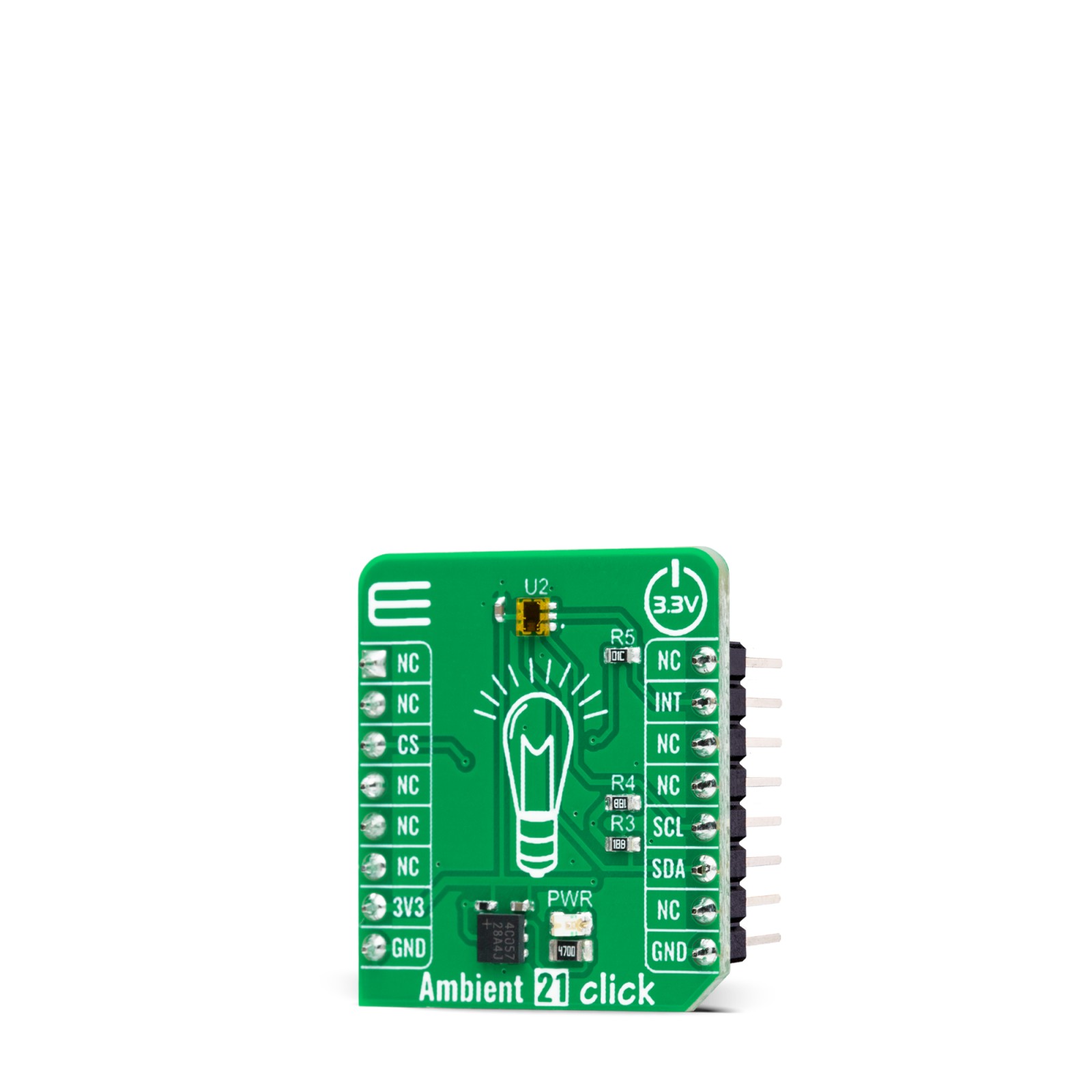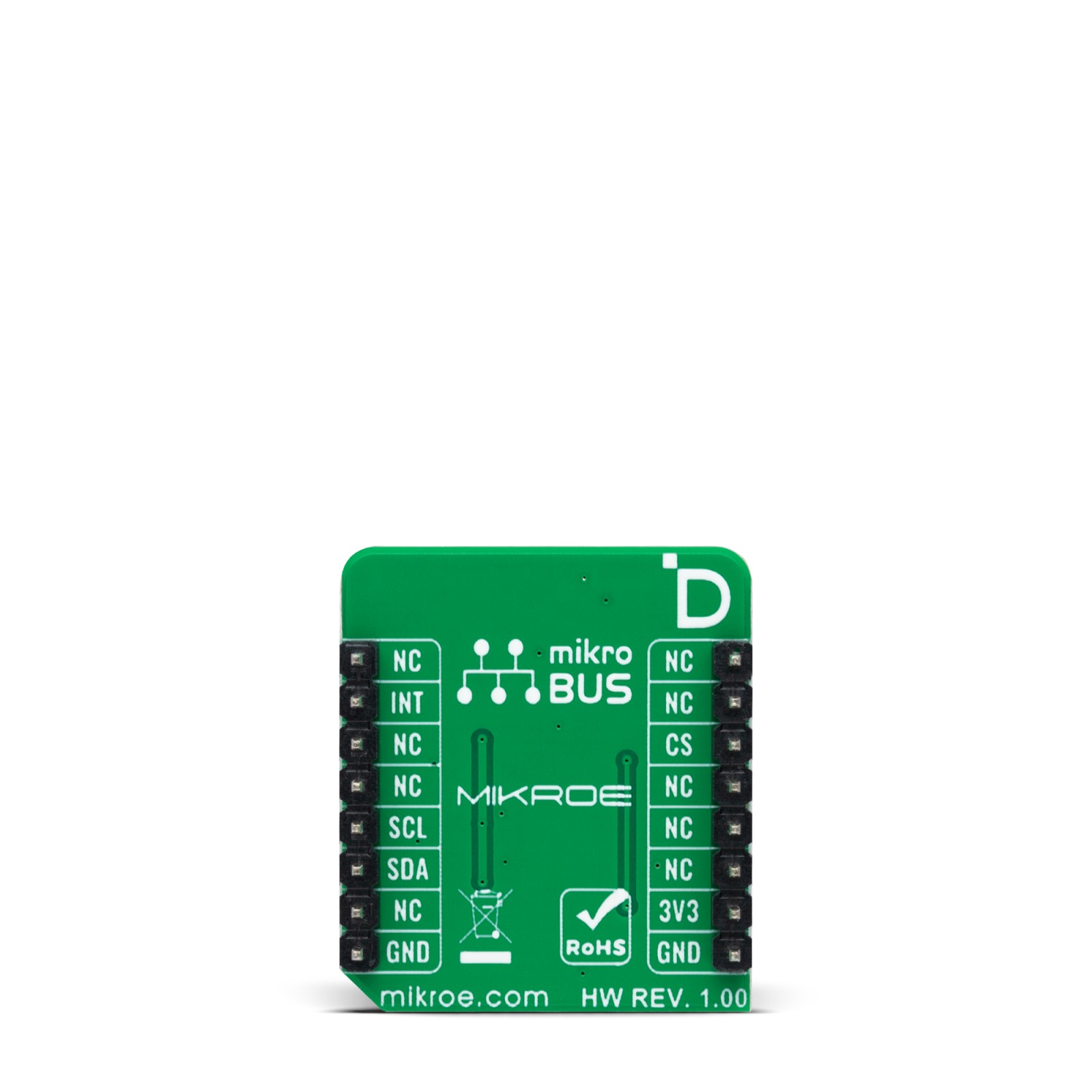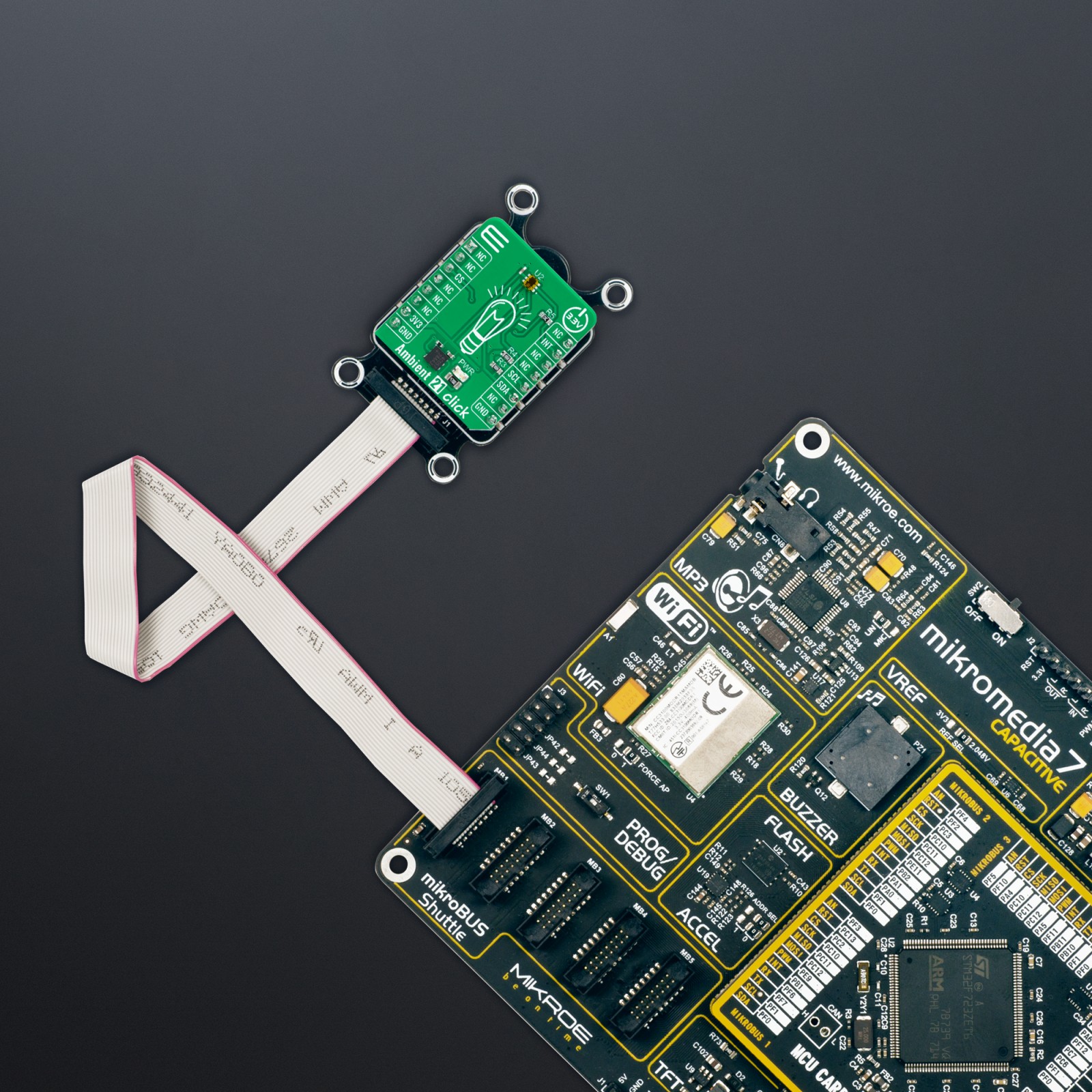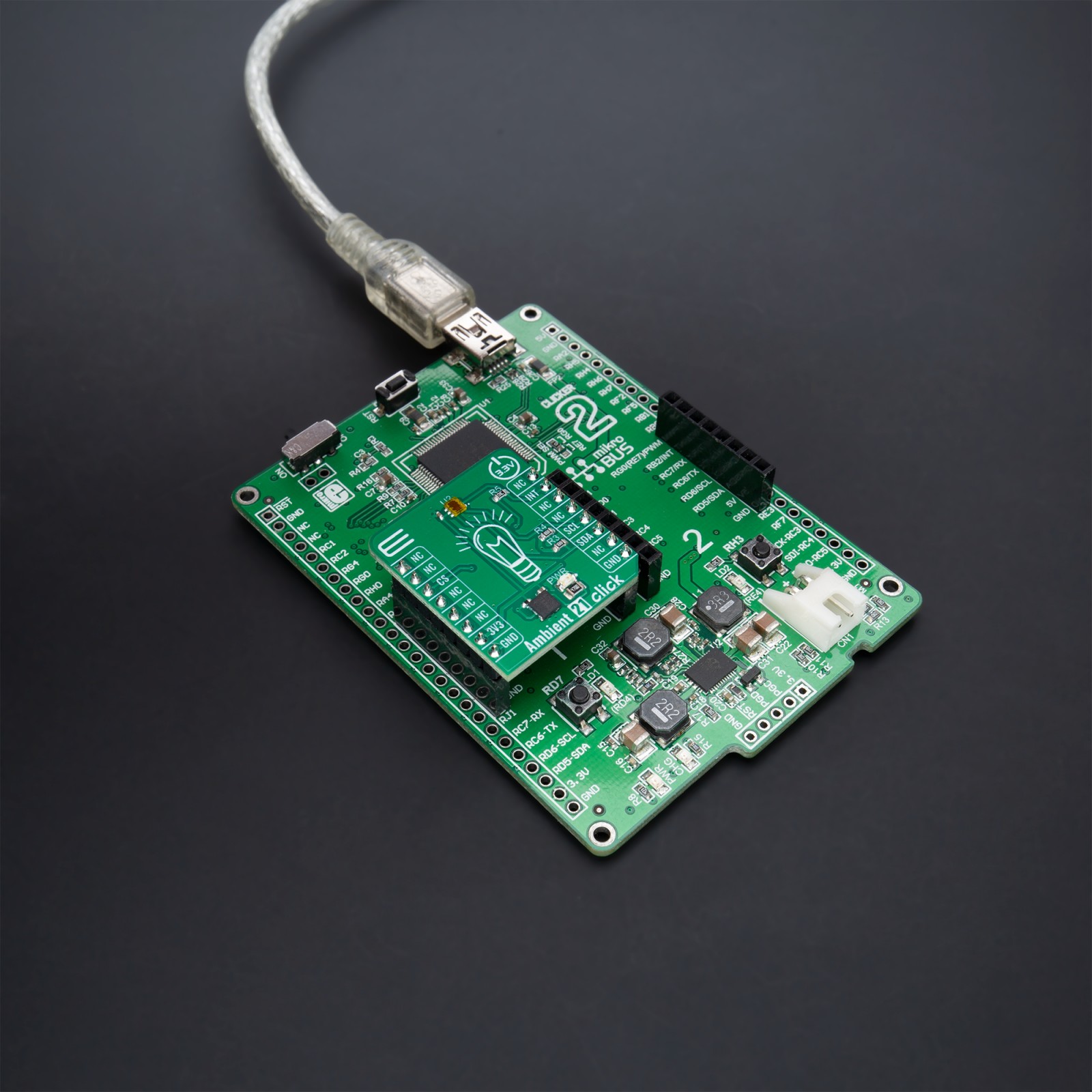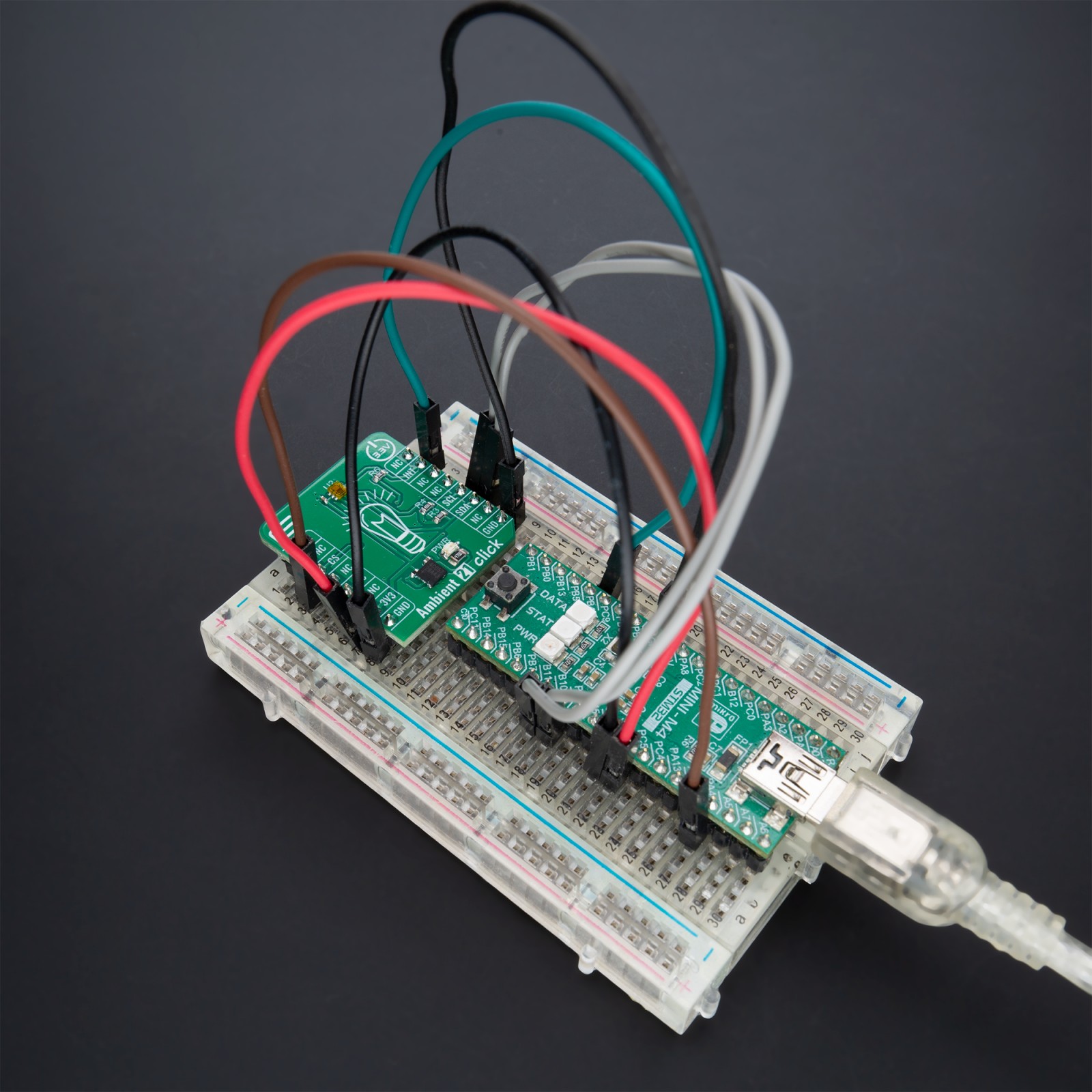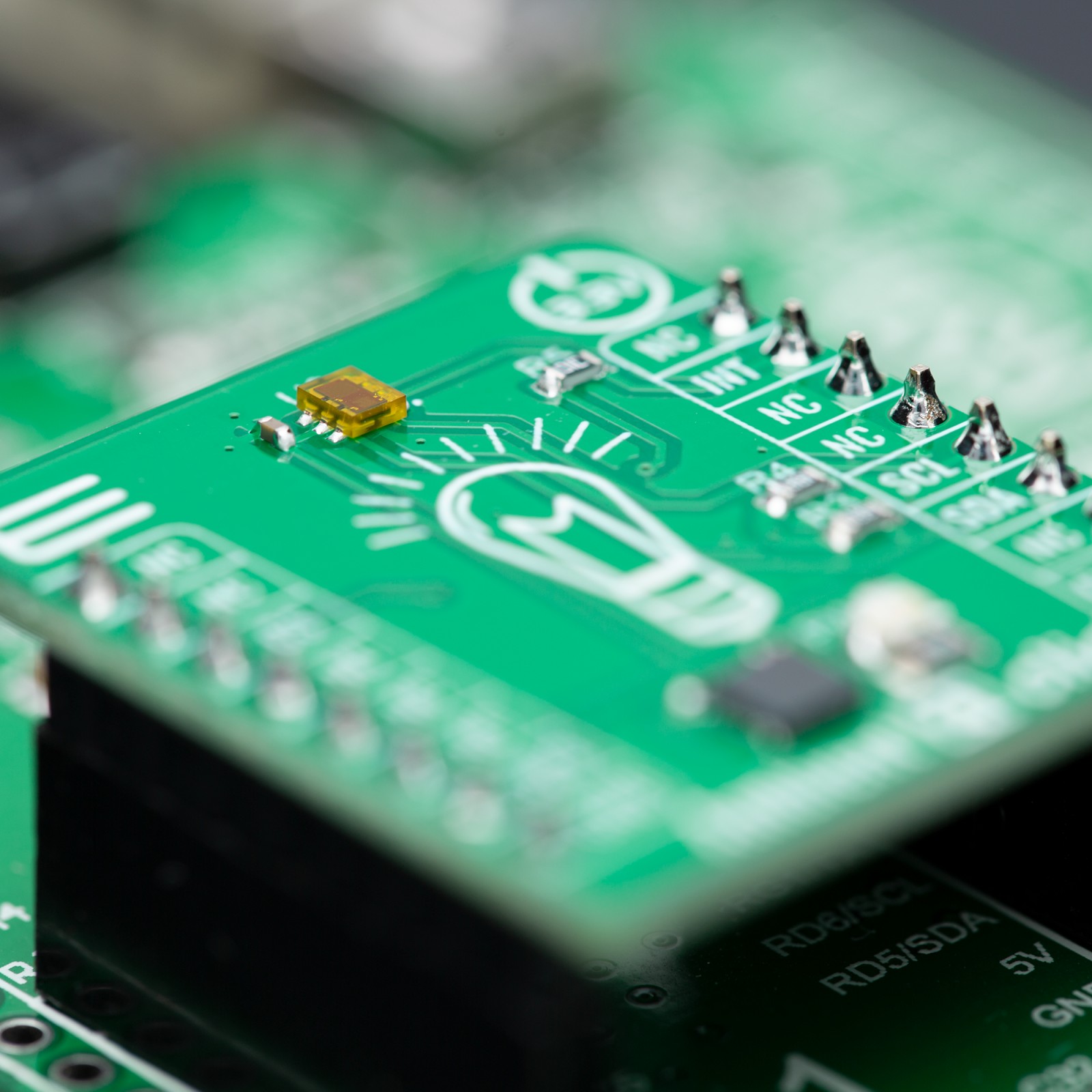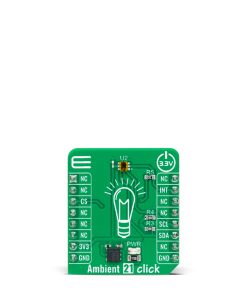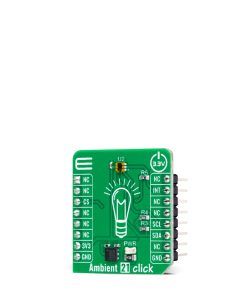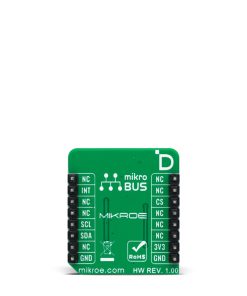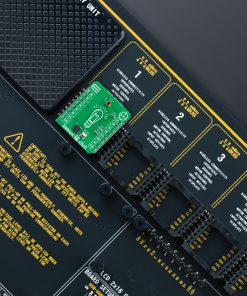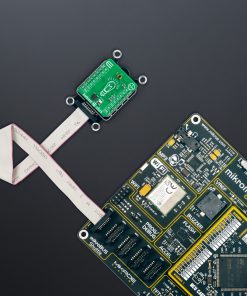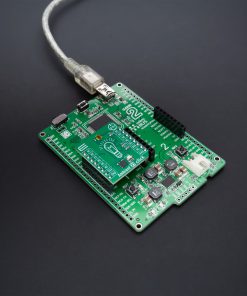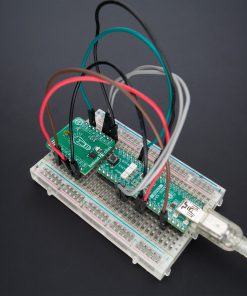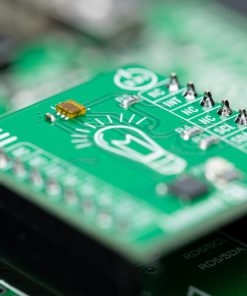Ambient 21 Click
R260.00 ex. VAT
Ambient 21 Click is a compact add-on board used to measure the amount ambient light present. This board features ams AG‘s TSL2591, a very-high sensitivity light-to-digital converter that transforms light intensity to a digital signal output that can be directly communicated via a I2C interface. It combines one broadband photodiode (visible plus infrared) and one infrared-response photodiode on a single CMOS integrated circuit, providing a flexible and wide operating range of up to 88klx with an excellent responsivity, close to the human eyes’ response. The TSL2591 also has a programmable interrupt function and an integrated filter to reduce unwanted IR signals from the environment, improving lux accuracy across various light sources. This Click board™ is suitable for obtaining ambient light data in applications such as automatic residential and commercial lighting management.
Ambient 21 Click is fully compatible with the mikroBUS™ socket and can be used on any host system supporting the mikroBUS™ standard. It comes with the mikroSDK open-source libraries, offering unparalleled flexibility for evaluation and customization. What sets this Click board™ apart is the groundbreaking ClickID feature, enabling your host system to seamlessly and automatically detect and identify this add-on board.
Stock: Lead-time applicable.
| 5+ | R247.00 |
| 10+ | R234.00 |
| 15+ | R221.00 |
| 20+ | R212.68 |


